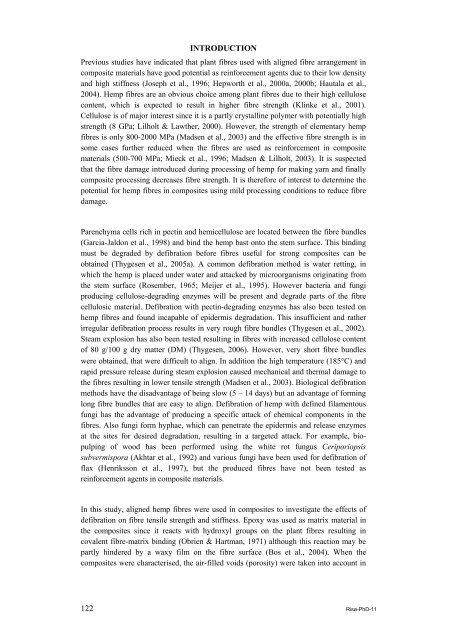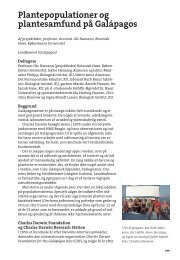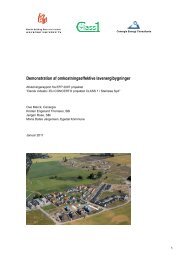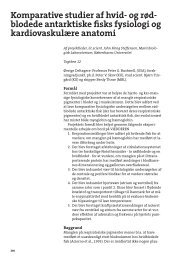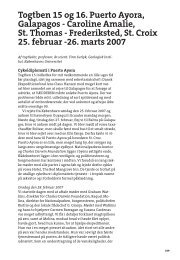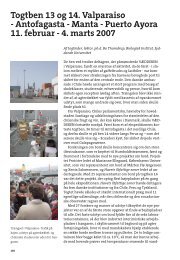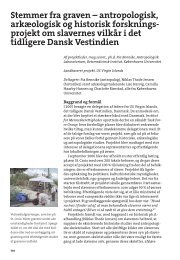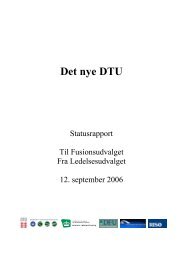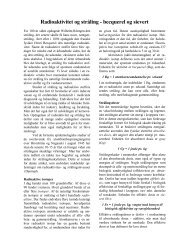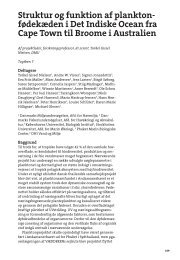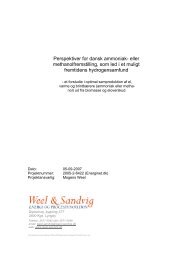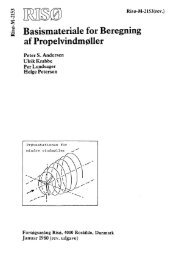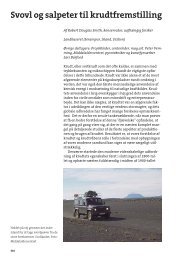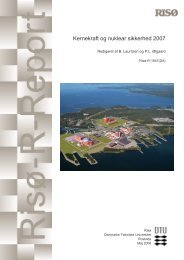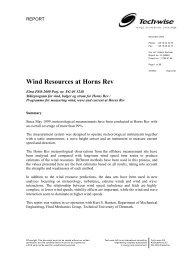Properties of hemp fibre polymer composites -An optimisation of ...
Properties of hemp fibre polymer composites -An optimisation of ...
Properties of hemp fibre polymer composites -An optimisation of ...
You also want an ePaper? Increase the reach of your titles
YUMPU automatically turns print PDFs into web optimized ePapers that Google loves.
INTRODUCTION<br />
Previous studies have indicated that plant <strong>fibre</strong>s used with aligned <strong>fibre</strong> arrangement in<br />
composite materials have good potential as reinforcement agents due to their low density<br />
and high stiffness (Joseph et al., 1996; Hepworth et al., 2000a, 2000b; Hautala et al.,<br />
2004). Hemp <strong>fibre</strong>s are an obvious choice among plant <strong>fibre</strong>s due to their high cellulose<br />
content, which is expected to result in higher <strong>fibre</strong> strength (Klinke et al., 2001).<br />
Cellulose is <strong>of</strong> major interest since it is a partly crystalline <strong>polymer</strong> with potentially high<br />
strength (8 GPa; Lilholt & Lawther, 2000). However, the strength <strong>of</strong> elementary <strong>hemp</strong><br />
<strong>fibre</strong>s is only 800-2000 MPa (Madsen et al., 2003) and the effective <strong>fibre</strong> strength is in<br />
some cases further reduced when the <strong>fibre</strong>s are used as reinforcement in composite<br />
materials (500-700 MPa; Mieck et al., 1996; Madsen & Lilholt, 2003). It is suspected<br />
that the <strong>fibre</strong> damage introduced during processing <strong>of</strong> <strong>hemp</strong> for making yarn and finally<br />
composite processing decreases <strong>fibre</strong> strength. It is therefore <strong>of</strong> interest to determine the<br />
potential for <strong>hemp</strong> <strong>fibre</strong>s in <strong>composites</strong> using mild processing conditions to reduce <strong>fibre</strong><br />
damage.<br />
Parenchyma cells rich in pectin and hemicellulose are located between the <strong>fibre</strong> bundles<br />
(Garcia-Jaldon et al., 1998) and bind the <strong>hemp</strong> bast onto the stem surface. This binding<br />
must be degraded by defibration before <strong>fibre</strong>s useful for strong <strong>composites</strong> can be<br />
obtained (Thygesen et al., 2005a). A common defibration method is water retting, in<br />
which the <strong>hemp</strong> is placed under water and attacked by microorganisms originating from<br />
the stem surface (Rosember, 1965; Meijer et al., 1995). However bacteria and fungi<br />
producing cellulose-degrading enzymes will be present and degrade parts <strong>of</strong> the <strong>fibre</strong><br />
cellulosic material. Defibration with pectin-degrading enzymes has also been tested on<br />
<strong>hemp</strong> <strong>fibre</strong>s and found incapable <strong>of</strong> epidermis degradation. This insufficient and rather<br />
irregular defibration process results in very rough <strong>fibre</strong> bundles (Thygesen et al., 2002).<br />
Steam explosion has also been tested resulting in <strong>fibre</strong>s with increased cellulose content<br />
<strong>of</strong> 80 g/100 g dry matter (DM) (Thygesen, 2006). However, very short <strong>fibre</strong> bundles<br />
were obtained, that were difficult to align. In addition the high temperature (185°C) and<br />
rapid pressure release during steam explosion caused mechanical and thermal damage to<br />
the <strong>fibre</strong>s resulting in lower tensile strength (Madsen et al., 2003). Biological defibration<br />
methods have the disadvantage <strong>of</strong> being slow (5 – 14 days) but an advantage <strong>of</strong> forming<br />
long <strong>fibre</strong> bundles that are easy to align. Defibration <strong>of</strong> <strong>hemp</strong> with defined filamentous<br />
fungi has the advantage <strong>of</strong> producing a specific attack <strong>of</strong> chemical components in the<br />
<strong>fibre</strong>s. Also fungi form hyphae, which can penetrate the epidermis and release enzymes<br />
at the sites for desired degradation, resulting in a targeted attack. For example, biopulping<br />
<strong>of</strong> wood has been performed using the white rot fungus Ceriporiopsis<br />
subvermispora (Akhtar et al., 1992) and various fungi have been used for defibration <strong>of</strong><br />
flax (Henriksson et al., 1997), but the produced <strong>fibre</strong>s have not been tested as<br />
reinforcement agents in composite materials.<br />
In this study, aligned <strong>hemp</strong> <strong>fibre</strong>s were used in <strong>composites</strong> to investigate the effects <strong>of</strong><br />
defibration on <strong>fibre</strong> tensile strength and stiffness. Epoxy was used as matrix material in<br />
the <strong>composites</strong> since it reacts with hydroxyl groups on the plant <strong>fibre</strong>s resulting in<br />
covalent <strong>fibre</strong>-matrix binding (Obrien & Hartman, 1971) although this reaction may be<br />
partly hindered by a waxy film on the <strong>fibre</strong> surface (Bos et al., 2004). When the<br />
<strong>composites</strong> were characterised, the air-filled voids (porosity) were taken into account in<br />
122 Risø-PhD-11


